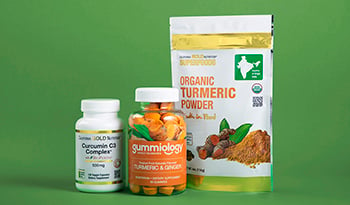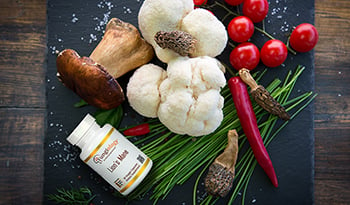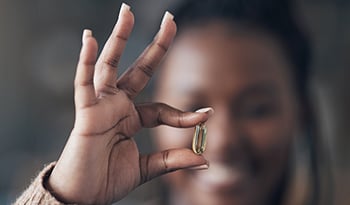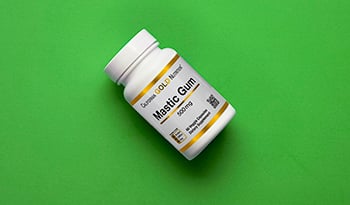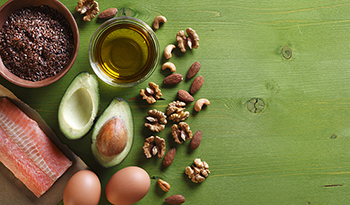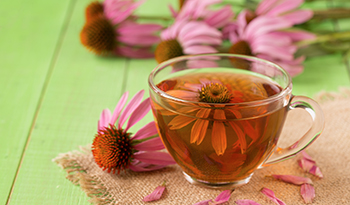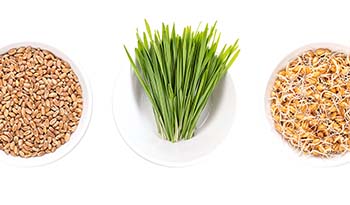Top 9 Traditional Chinese Medicinal Herbs
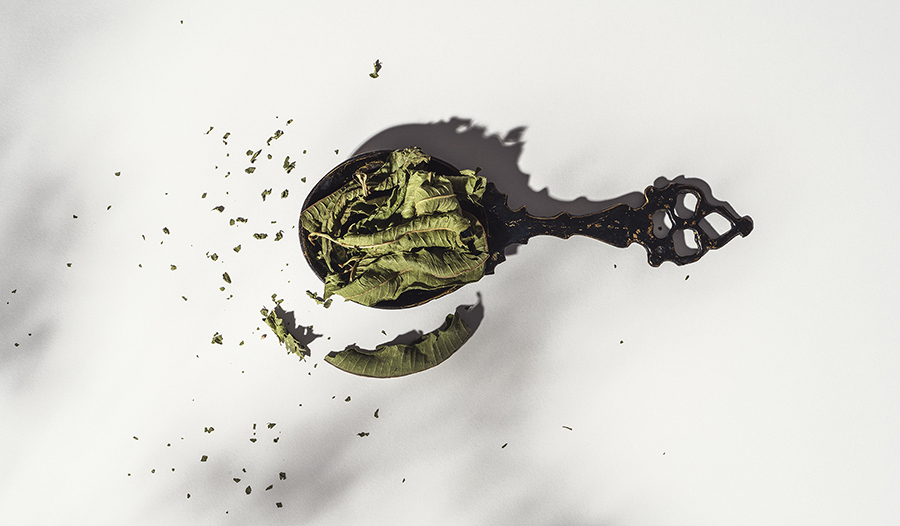
Traditional Chinese Medicine (TCM) is an ancient healing art believed to be over 3,500 years old. Those who practice TCM use mind and body techniques in an effort to restore the balance of Qi (also referred to as “vital life force”) energy in mind, body, and spirit to improve overall health and wellbeing. Within the TCM discipline, it is believed that the imbalance and disease states that occur in our lives are due to a disruption in yin and yang energy, which are the complementary forces of nature.
Healing modalities used by TCM practitioners include acupuncture, cupping therapy, massage, gua sha, and tai chi. Herbal therapy, which is also central to TCM, will be the focus in this article.
Herbs can be consumed as food additives, powders, or tea. Nowadays, when choosing an herbal supplement or tea, quality is paramount along with ensuring they come from a reputable company that performs adequate quality testing.
The following are the top 9 Traditional Chinese Medicinal herbs.
Astragalus (Huang Qi), Immune Support, and More
Astragalus is a popular herb believed to have life-extending properties. Its major components are flavonoids, saponins, and polysaccharides, which give astragalus its antioxidant and anti-inflammatory properties. Some believe1 it may also lower cholesterol, reduce blood sugar, and have liver-protecting benefits.
In addition, astragalus is believed to provide the following health benefits:
- Brain protection2
- Antioxidant protection
- Immunity support
- Anti-aging effects
- Vascular health support3
Available as a supplement, powder, extract, or tea. Suggested dose: As directed on the label.
Cinnamon and Blood Sugar
Cinnamon is a common culinary spice used all over the world but is also popular within TCM. Over the last decade, there has been renewed interest in cinnamon and its ability to help regulate blood sugar levels in both pre-diabetics and diabetics alike. In addition, it has antibacterial properties.
A 2013 study4 concluded, “The consumption of cinnamon is associated with a statistically significant decrease in levels of fasting plasma glucose, total cholesterol, LDL (bad cholesterol), and triglyceride levels, and an increase in HDL (good cholesterol) levels; however, no significant effect on hemoglobin A1C was found…”.
A 2016 meta-analysis study5 also showed beneficial effects. In this study, patients continued to take their diabetes medications but also added cinnamon supplements. The researchers concluded that cinnamon supplements added to standard diabetic medications and other lifestyle therapies provided modest effects on lowering fasting blood sugar values and hemoglobin A1c.
Lastly, a 2020 study6 showed that cinnamon also had antibacterial effects against harmful oral bacteria and therefore may play a role in dental health.
Available as a supplement, powder, extract, or tea. Suggested dose: As directed on the label or added to your food to your liking.
Ginkgo Biloba and Brain Health
Ginkgo Biloba is one of the most studied herbs and is believed to have brain-boosting benefits. Since 2008, more than 2,000 scientific studies have been published with some showing ginkgo biloba to be a potent antioxidant with vascular benefits. In addition, ginkgo can inhibit platelets from sticking together.
Ginkgo is considered by some to be a “living fossil” and has been found in rock layers dating back over 270 million years. Native to China, this plant is a favored medicine of TCM that is commonly taken by those with memory issues, including Alzheimer’s disease, to help improve mental sharpness.
A 2014 study in Phytomedicine concluded that ginkgo biloba could be helpful and improve memory in those undergoing conventional treatment for Alzheimer’s disease. A subsequent 2016 study in Current Topics in Medicinal Chemistry7 concluded, “Ginkgo biloba is potentially beneficial for the improvement of cognitive function, activities of daily living, and global clinical assessment in patients with mild cognitive impairment or Alzheimer's disease.”
A 2020 study8 also showed that ginkgo could help fight against a fatty liver, a condition that is becoming more common as the world population becomes heavier.
Some in the healthcare profession question whether ginkgo biloba may increase bleeding risks. However, a 2011 study in Pharmacotherapy9, which evaluated 18 studies including almost 1900 adults, showed there was not an increased risk of bleeding. Ginkgo is generally regarded as safe.
Suggested dose: As directed on the label.
Ginger’s Bioactive Properties
The scientific name for ginger is zingiber officinale, while its roots are known as rhyzomus zingiberus. Originally from Southeast Asia and related to turmeric and cardamom, ginger is a flowering plant with bioactive properties.
Ginger’s active ingredients are gingerol and shogaol.10 Raw ginger contains the highest concentration of these molecules, but many find uncooked ginger to be unpalatable. As a result, supplements and herbal teas are popular alternatives.
Ginger may be helpful with the following:
- Nausea and vomiting
- Morning sickness
- Stomach bugs and traveler’s diarrhea
- Upper respiratory infections
- Arthritis
- Diabetes
Ginger is frequently consumed as a food, supplement, essential oil, or as an herbal tea. It plays an important role in overall health for millions around the world. Suggested dose: 2,500 to 4,000 mg per day.
Ginseng (Ren Shen), Immune Support, and More
Panax ginseng is taken for a great number of medical conditions. The origins of this plant are found in Korea, and it has been used for over 2,000 years. Also grown in areas of China and Siberia, Panax ginseng is unique — it should not be confused with other known ginsengs, such as the American ginseng (Panax quinquefolius) or Siberian ginseng (eleutherococcus senticosus). Panax ginseng is also referred to as Korean ginseng, Chinese ginseng, or Asian ginseng.
The active ingredients in Panax ginseng are known as ginsenosides. In total, more than 40 types of ginsenosides have been identified. According to a 2015 study11, Panax ginseng has an overall very safe profile.
The length of time one should take it is dependent on certain factors. While there are many benefits to taking Panax ginseng, those backed by a great deal of research include:
- Immune system support
- Reduced menstrual complaints and irregularities12
- Help in reducing cold fingers and toes13
- Cardiovascular health
- Neurological health and improved cognitive function14
- Weight management
- Improvement of fatigue15
- Improved bone strength16
Panax ginseng is available in tablet, liquid, powder, or tea form. Suggested dose: As directed on the label.
Gotu Kola is Rich in Antioxidants
Gotu kola, also known as centella asiatica or Asiatic pennywort, is a green, leafy herbal vegetable commonly consumed throughout Asia. Related to carrots, parsley, and celery, this herb is rich in antioxidants as well as vitamins B and C. Gotu kola is used in traditional medicine for wounds and to help promote lactation. It has been called the “herb of enlightenment,”17, and its use was described thousands of years ago in the ancient Ayurvedic and Daoist medical texts.
According to a 2014 study in the Journal of Alzheimer’s Disease18, caffeoylquinic acids — the main ingredient found in gotu kola — can help protect the brain against amyloid deposits, which are believed to cause Alzheimer’s disease.
Additionally, a 2017 study in Neuroscience Letter19 also showed the active ingredient in gotu kola improved the nerves of the brain and helped preserve memory. Later, a 2020 double-blind randomized control study20 also showed gotu kola could help with anxiety-related symptoms.
Available as a powder, supplement, tea, or extract. Suggested dose: As directed on the label.
Licorice (Gan Cao) and Stomach Ulcers
When most think of licorice, candy — not an herb — comes to mind. However, licorice root is an herb that has played an important role in Traditional Chinese Medicine. Known in China as “gancao,” which means “sweetgrass”, its use goes back to 2100 BC and was first described in Shennong׳s Classic of Materia Medica21.
Licorice is frequently used for those with adrenal fatigue. Its active ingredients include glycyrrhizin and genistein. Due to the potential for glycyrrhizin to elevated blood pressure and lower potassium, most supplements utilize the DGL (Deglycyrrhizinated Licorice) form of licorice, which does NOT have the associated side effects and is considered safer for consumption as it removes a substantial amount of glycyrrhizin.
A 1968 study22 showed this natural medicine's ability to help heal stomach ulcers and intestinal ulcers. A 1978 study23 in the British Medical Journal showed it may also be of help in the prevention of stomach ulcers, while a 2012 study24 showed it could relieve upset stomachs.
Lastly, a 2013 study25 showed that licorice could help balance hormones in women who were having symptoms related to menopausal changes
Available as a supplement, powder, and tea. Suggested dosage: Licorice root as directed on the label.
Red Yeast Rice and Cholesterol
Red Yeast Rice (RYR) has been used for almost 2,300 years. Originating in China, it has been used as both a food coloring and a medicinal herb. Around 800 AD in China, it was taken internally to “invigorate the body, aid in digestion and revitalize the blood”26. RYR has also been used in Traditional Chinese Medicine (TCM) to help the spleen, eliminate phlegm, and improve blood circulation27.
RYR is made by fermenting rice with a species of yeast known as monascus purpeus and contains compounds called monacolins. These chemicals inhibit production of an enzyme called "HMG-CoA reductase", which when blocked stops the body from producing cholesterol. This is similar to what a statin drug does.
However, not everyone can take a prescription statin drug due to the side effects. A 2009 study in the Annals of Internal Medicine28 studied patients who did not tolerate statin medications due to muscle aches, a common side effect. The results showed that red yeast rice could efficiently lower LDL (bad) cholesterol. That same year, another study in The American Journal of Cardiology29 showed 92 percent who could not tolerate statin medication due to side effects not only did well with RYR but also lowered their cholesterol.
A 2008 study30 showed that RYR, when combined with lifestyle changes and omega-3 fish oil supplements, could lower LDL (bad) cholesterol by up to 42 percent — a result similar to drugs like Lipitor.
To be clear, people who may benefit most from the cholesterol-lowering effects of RYR include those at low cardiac risk (non-smoker, non-diabetics) and those who have no history of heart attacks, coronary stents, or strokes.
Consult with your doctor before trying alternatives if a prescription statin drug has been advised. Studies have clearly shown that statins can be beneficial for those at moderate to high risk for vascular disease.
Turmeric’s Anti-inflammatory Benefits
Turmeric, also known as curcuma longa and Indian saffron, is a rooted plant of the ginger family. It is often consumed for its anti-inflammatory, anti-oxidant, and digestive health properties. Curcumin, the main active ingredient found in turmeric, is believed to provide many of the associated health benefits.
Over the last few years, I have recommended turmeric to patients as a first-line approach for arthritis. The results have been great. Many patients have reported to me that they have been able to reduce their need for non-steroidal anti-inflammatory drugs (ie Ibuprofen, naproxen) and, in some cases, opiate medications.
Traditional Chinese Medicine’s use of turmeric or “jiang huang” is based on its perceived effect of being able to move a person’s “qi” or vital energy. Turmeric is also used for the following health conditions:
- Arthritis
- Atherosclerosis and heart disease
- Dementia, including Alzheimer’s disease
- Diabetes
- High blood pressure
- Stomach ulcers caused by the h. pylori bacteria31
- Prevention of gallstones32
- Helps remove mercury from the body33
Available as a capsule, powder, and tea. Suggested Dose: 500 to 2,000 mg per day.
References:
- Liu P, Zhao H, Luo Y. Anti-Aging Implications of Astragalus Membranaceus (Huangqi): A Well-Known Chinese Tonic. Aging Dis. 2017;8(6):868-886. Published 2017 Dec 1. doi:10.14336/AD.2017.0816
- Li WZ, Wu WY, Huang DK, Yin YY, Kan HW, Wang X, et al. (2012). Protective effects of astragalosides on dexamethasone and Abeta25-35 induced learning and memory impairments due to decrease amyloid precursor protein expression in 12-month male rats. Food Chem Toxicol, 50: 1883-1890.
- Astragalosides promote angiogenesis via vascular endothelial growth factor and basic fibroblast growth factor in a rat model of myocardial infarction. Yu JM, Zhang XB, Jiang W, Wang HD, Zhang YN
- Mol Med Rep. 2015 Nov; 12(5):6718-26.
- Allen RW, Schwartzman E, Baker WL, Coleman CI, Phung OJ. Cinnamon use in type 2 diabetes: an updated systematic review and meta-analysis. Ann Fam Med. 2013;11(5):452-9.
- Costello RB, Dwyer JT, Saldanha L, Bailey RL, Merkel J, Wambogo E. Do Cinnamon Supplements Have a Role in Glycemic Control in Type 2 Diabetes? A Narrative Review. J Acad Nutr Diet. 2016;116(11):1794-1802.
- Yanakiev S. Effects of Cinnamon (Cinnamomum spp.) in Dentistry: A Review. Molecules. 2020 Sep 12;25(18):E4184. doi: 10.3390/molecules25184184. PMID: 32932678.
- Curr Top Med Chem. 2016;16(5):520-8.
- Yang Y, Chen J, Gao Q, Shan X, Wang J, Lv Z. Study on the attenuated effect of Ginkgolide B on ferroptosis in high fat diet induced nonalcoholic fatty liver disease. Toxicology. 2020 Sep 22:152599. doi: 10.1016/j.tox.2020.152599. Epub ahead of print. PMID: 32976958.
- Pharmacotherapy. 2011 May;31(5):490-502. doi: 10.1592/phco.31.5.490.
- Semwal, Ruchi Badoni, et al. “Gingerols and Shogaols: Important Nutraceutical Principles from Ginger.” Phytochemistry, vol. 117, 2015, pp. 554–568., doi:10.1016/j.phytochem.2015.07.012.
- Kim Y-S, Woo J-Y, Han C-K, Chang I-M. Safety Analysis of Panax Ginseng in Randomized Clinical Trials: A Systematic Review. Adams JD, ed. Medicines. 2015;2(2):106-126. doi:10.3390/medicines2020106.
- Yang M, Lee H-S, Hwang M-W, Jin M. Effects of Korean red ginseng (Panax Ginseng Meyer) on bisphenol A exposure and gynecologic complaints: single blind, randomized clinical trial of efficacy and safety. BMC Complementary and Alternative Medicine. 2014;14:265. doi:10.1186/1472-6882-14-265.
- J Ethnopharmacol. 2014 Dec 2;158 Pt A:25-32. doi: 10.1016/j.jep.2014.09.028. Epub 2014 Oct 8.
- Lho SK, Kim TH, Kwak KP, et al. Effects of lifetime cumulative ginseng intake on cognitive function in late life. Alzheimer’s Research & Therapy. 2018;10:50. doi:10.1186/s13195-018-0380-0.
- Tode T, Kikuchi Y, Hirata J, Kita T, Nakata H, Nagata I. Effect of Korean red ginseng on psychological functions in patients with severe climacteric syndromes. International Journal of Gynaecology Obstetrics. 1999;67:169–74
- Siddiqi MH, Siddiqi MZ, Ahn S, et al. Ginseng saponins and the treatment of osteoporosis: mini literature review. Journal of Ginseng Research. 2013;37(3):261-268. doi:10.5142/jgr.2013.37.261.
- Herb of Enlightenment , accessed March 31, 2018 http://herbscoop.com/herbs-for-health/amazing-benefits-gotu-kola-enlightenment-herb/
- Gray, N. E., Morré, J., Kelley, J., Maier, C. S., Stevens, J. F., Quinn, J. F., & Soumyanath, A. (2014). Caffeoylquinic acids in Centella asiatica protect against β-amyloid toxicity. Journal of Alzheimer’s Disease : JAD, 40(2), 359–373. http://doi.org/10.3233/JAD-131913
- Neuroscience Letter. 2017 Apr 12;646:24-29. doi: 10.1016/j.neulet.2017.02.072. Epub 2017 Mar 6.
- Bradwejn J, Zhou Y, Koszycki D, Shlik J. A double-blind, placebo-controlled study on the effects of Gotu Kola (Centella asiatica) on acoustic startle response in healthy subjects. J Clin Psychopharmacol. 2000 Dec;20(6):680-4. doi: 10.1097/00004714-200012000-00015. PMID: 11106141.
- Wang L, Yang R, Yuan B, Liu Y, Liu C. The antiviral and antimicrobial activities of licorice, a widely-used Chinese herb. Acta Pharmaceutica Sinica B. 2015;5(4):310-315. doi:10.1016/j.apsb.2015.05.005.
- Tewari SN, Trembalowicz FC. Some experience with deglycyrrhizinated liquorice in the treatment of gastric and duodenal ulcers with special reference to its spasmolytic effect. Gut. 1968;9(1):48-51.
- Hollanders D, Green G, Woolf IL, et al. Prophylaxis with deglycyrrhizinised liquorice in patients with healed gastric ulcer. British Medical Journal. 1978;1(6106):148.
- Raveendra KR, Jayachandra, Srinivasa V, et al. An Extract of Glycyrrhiza glabra (GutGard) Alleviates Symptoms of Functional Dyspepsia: A Randomized, Double-Blind, Placebo-Controlled Study. Evidence-based Complementary and Alternative Medicine : eCAM. 2012;2012:216970. doi:10.1155/2012/216970.
- Hajirahimkhan A, Simmler C, Yuan Y, et al. Evaluation of Estrogenic Activity of Licorice Species in Comparison with Hops Used in Botanicals for Menopausal Symptoms. Ahmad A, ed. PLoS ONE. 2013;8(7):e67947. doi:10.1371/journal.pone.0067947.
- https://en.wikipedia.org/wiki/Red_yeast_rice#cite_ref-4
- https://www.drugs.com/npp/red-yeast-rice.html
- Ann Intern Med. 2009 Jun 16;150(12):830-9, W147-9.
- Lipid-Lowering Efficacy of Red Yeast Rice in a Population Intolerant to Statins Venero, Carmelo V. et al. American Journal of Cardiology , Volume 105 , Issue 5 , 664 - 666
- Simvastatin vs Therapeutic Lifestyle Changes and Supplements: Randomized Primary Prevention Trial Becker, David J. et al. Mayo Clinic Proceedings , Volume 83 , Issue 7 , 758 - 764
- Sarkar A, De R, Mukhopadhyay AK. Curcumin as a potential therapeutic candidate for Helicobacter pylori associated diseases. World Journal of Gastroenterology. 2016;22(9):2736-2748. doi:10.3748/wjg.v22.i9.2736.
- Li Y, Li M, Wu S, Tian Y. Combination of curcumin and piperine prevents formation of gallstones in C57BL6 mice fed on lithogenic diet: whether NPC1L1/SREBP2 participates in this process? Lipids in Health and Disease. 2015;14:100. doi:10.1186/s12944-015-0106-2.
- J Appl Toxicol. 2010 Jul;30(5):457-68. doi: 10.1002/jat.1517.
DISCLAIMER:This Wellness Hub does not intend to provide diagnosis...













































































 Table of Contents
Table of Contents



